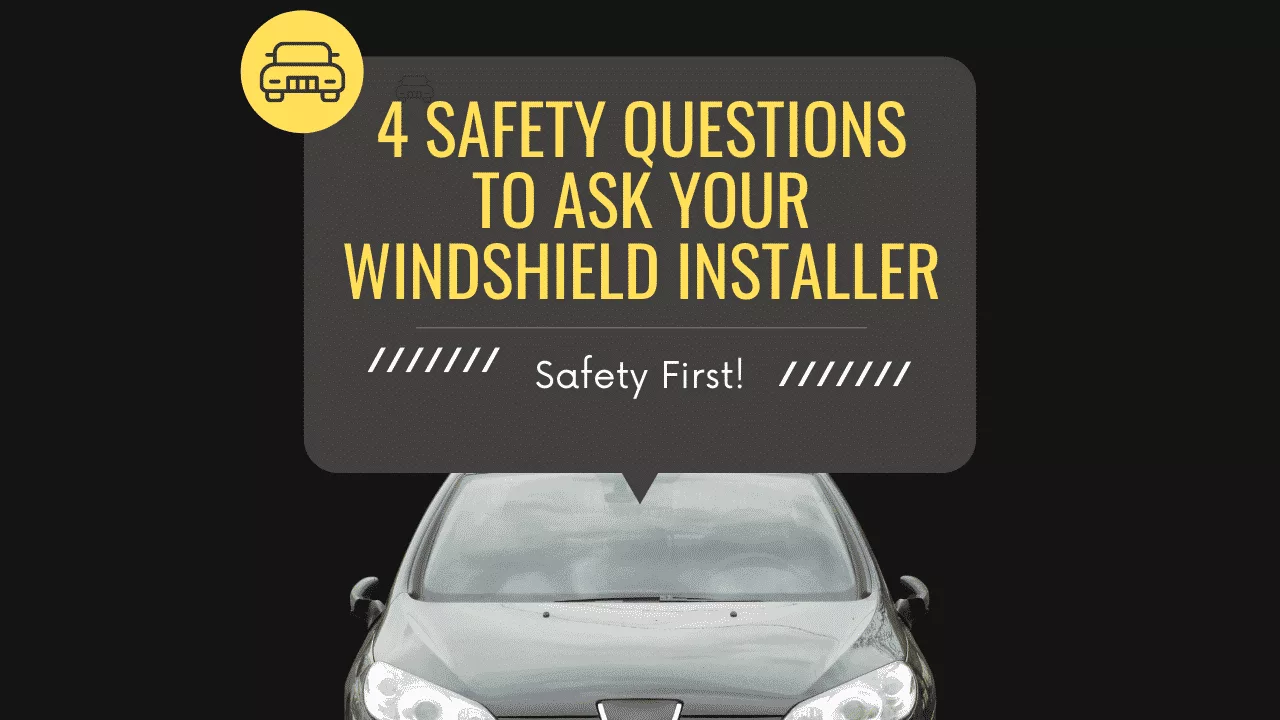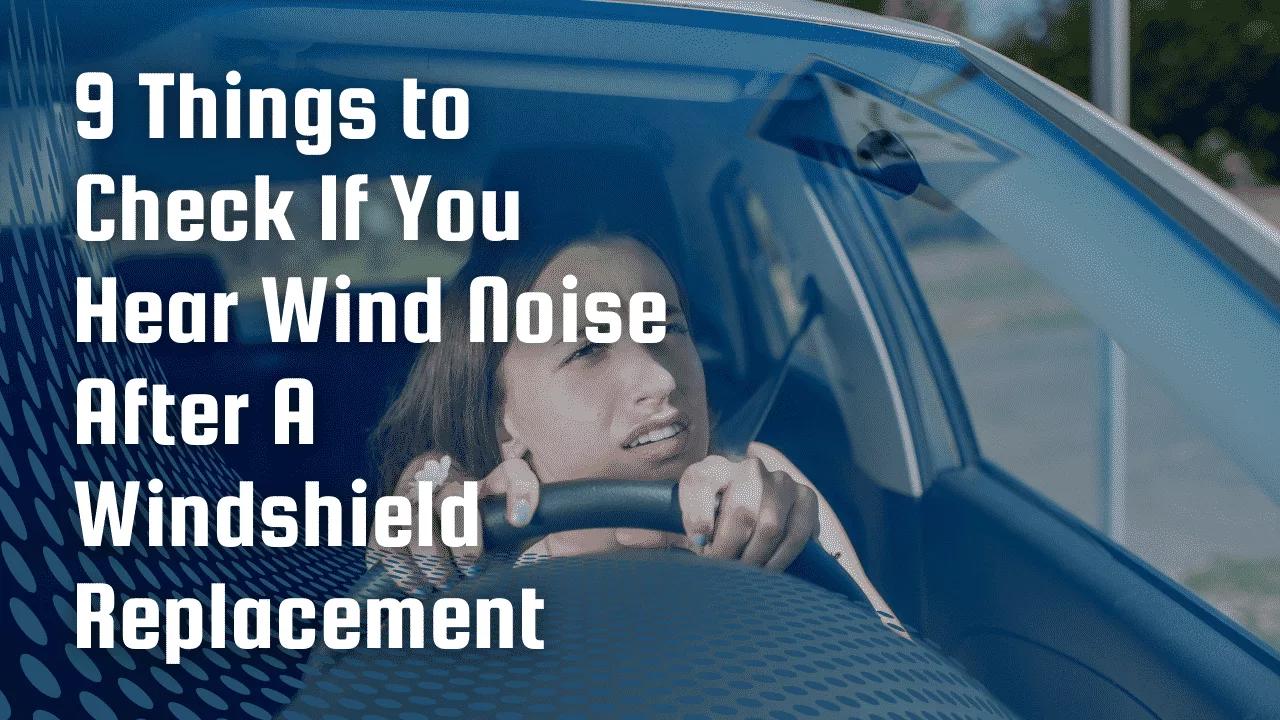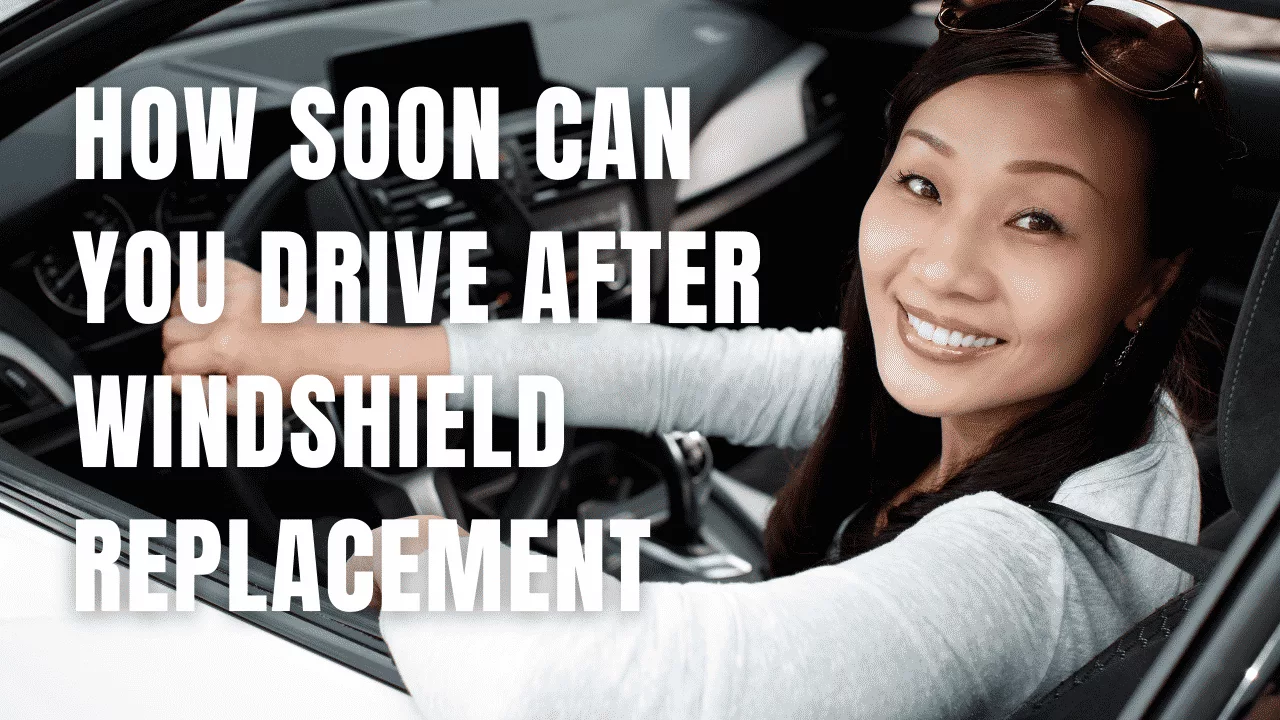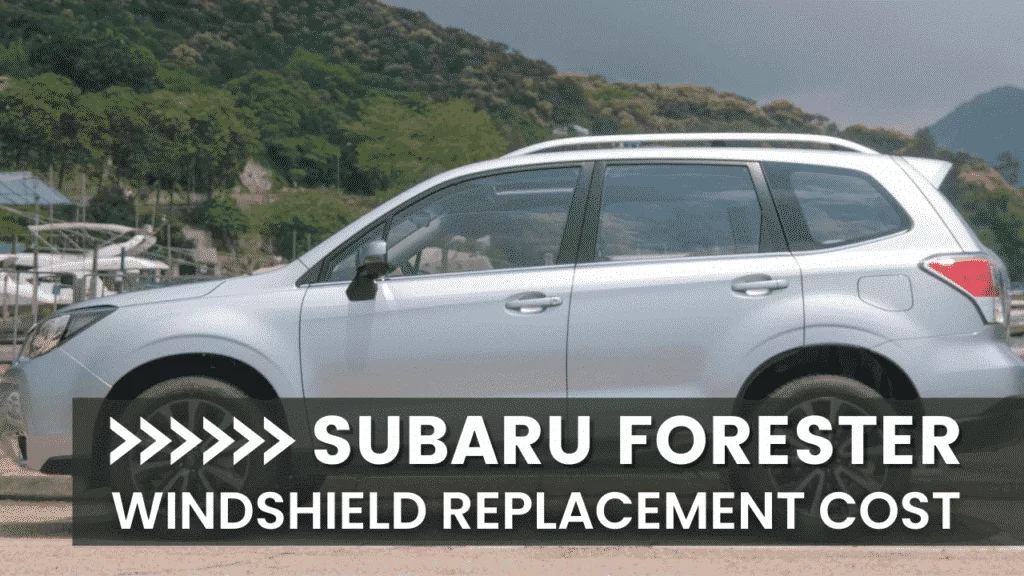
Subaru Forester Windshield Replacement Cost
If you own a Subaru Forester, chances are you’ll need the windshield replaced or repaired at some point, so we’ve written this to help you better understand what a Subaru Forester windshield replacement costs. After reading this article, you’ll know the average price most Forester owners pay for auto glass and what types of services we recommend to help your Forester run better and last longer.
The average cost to replace a Subaru Forester windshield in the U.S. is $350 to $450, including labor. However, the price will vary depending on the glass type you select. For example, an aftermarket windshield won’t cost near as much as one from a Subaru dealer.
Another critical factor in the price you’ll pay depends on whether you have advanced safety systems such as the EyeSight feature or heating elements. For example, a heated windshield is more expensive than a basic one, and EyeSight calibration also increases the costs.
Subaru Forester Auto Glass Services
- Windshield Replacement
- Sunroof Replacements
- Door Glass Replacements
- Back Window Replacement
- Vent & Quarter Window Replacement
- Windshield Repair
- Window Regulator Repair
Average Glass Quotes for a Subaru Forester
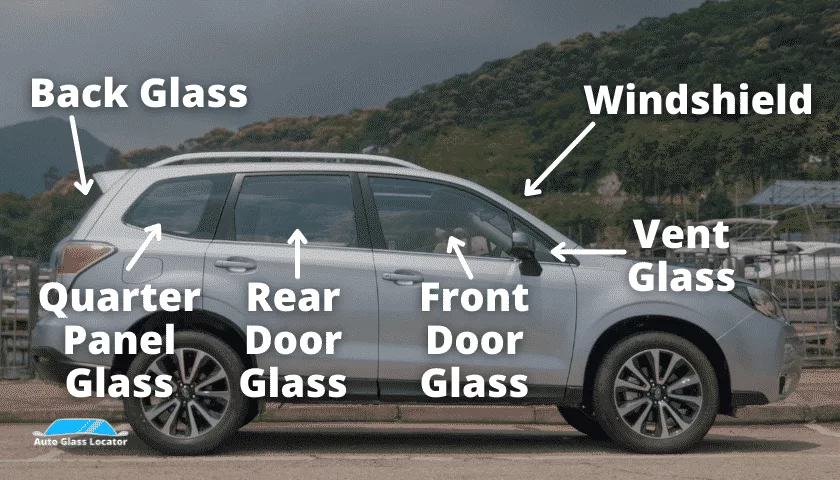
The online glass quotes below for the Subaru Forester range from the first-generation 1997 model to the currently produced 2022 version. These prices will help you better understand what to expect when installing OEM, Dealer, or Aftermarket glass. However, local glass shops may charge fees higher than those listed depending on the city and state where you live.
The Forester has six different glass parts: the front windshield, door vent glass, front and rear door glass, quarter panel glass, and rear window, also referred to as the rear windshield. Believe it or not, some smaller windows will cost as much as the larger ones. For example, the vent glass on the front door might cost $310 to $425, which is pretty pricey for a small piece of glass.
Keep in mind if your Forester has the EysSight safety system, the process to recalibrate it can make a difference in price by more than $350.
| Glass Part | Average Cost |
| Windshield (doesn’t include recalibration) | $350 – $450 |
| Driver / Passenger Side Vent Glass | $310 – $425 |
| Driver / Passenger Side Front Door | $415 – $610 |
| Driver / Passenger Side Back Door | $550 – $650 |
| Driver / Passenger Side Quarter Panel Glass | $1,500 – $1,650 |
| Rear Glass / Back Window w/ tint (Solar & Heated) | $625 – $795 |
| Windshield Chip Repair (per chip) | $55 – $75 |
If you have questions about repairing your broken windshield or are ready to schedule service, click the button below to call 877-781-6961 now.
Get an Auto Glass Price Quote Now
Recommended Subaru Forester Maintenance
Is your maintenance service record up to date? It’s essential to keep your vehicle running well. That means ensuring that all its components are working correctly and that there aren’t any problems with the engine, transmission, brakes, steering, suspension, or other major moving parts. If you haven’t had your car serviced recently, now is the time to get it done. Below are some automotive services we recommend to help avoid expensive repairs.
- Oil Changes: A regular oil change helps keep your engine running smoothly and extends its life. Always use the manufacturer’s recommended grade and amount when changing the oil. Check out the page we wrote on oil changes to learn more about this service type.
- Timing Belt Service: Your timing belt should be changed every 60,000 miles or less to prevent getting stranded on the roadside. The timing belt connects to the crankshaft & camshaft to ensure valves and pistons move accordingly.
- Tune-Up: Your vehicle needs a tune-up to check all moving parts and ensure they’re working correctly every 15,000 to 20,000 miles. Most mechanics recommend tune-ups annually at a minimum. This service includes checking several engine components. To learn more about this service type, check out our page on automotive tune-ups.
- Tire Rotation: Rotate tires with new treads every 6,000 miles to avoid premature wear and damage. Tires that don’t rotate properly can cause uneven wear, affecting handling and braking. Some vehicles might require rotating the tires on shorter intervals like 2,500 to 3,000 miles. To learn more about this service type, visit our tire rotation article.
- Brake Replacement: Brake pads and rotors typically need replacement after roughly 50,000 miles. If you notice excessive brake noise, replace both brake pads and rotors. However, be sure to follow the manufacturer’s recommendations for how often to perform this service. Learn more about this service type by visiting our brake replacement article.
- Windshield Wiper Blades: When the rubber blades on your wipers deteriorate, they fail to clean the glass, causing a safety hazard. Not only that, old brittle rubber can break off, leading to possible scratches in the glass requiring additional repairs. Check out our guide on windshield scratch removal if you have minor scratches in the front window.
- Check the Battery: Batteries lose their charge over time, so make sure yours has enough juice before heading out on a long road trip. You can also test the battery voltage using an inexpensive multimeter. If you happen to get stranded with a dead battery, don’t worry, cars only use the battery for starting and use the alternator to continue running, so reach out to someone close by for a boost. If no one is around and you don’t have roadside assistance, check the back of your license. Most states have a roadside assistance number on the back of the driver’s license.
- Wash and Wax: This service isn’t something that’s needed to keep your Subaru Forester running smoothly, but it falls into the category of regular maintenance services. We recommend washing your Forester weekly to remove harmful surface contaminants that cause damage to the clear coat. For waxing, we recommend hand waxing the surface every three months to prevent fading from oxidation. Check out additional details in the article we wrote about auto detailing.
- Dent Repair: This is another service that’s not needed to keep your Forester running in top condition. However, it goes hand in hand with washing and waxing to have your vehicle continue looking new. Additionally, cars without dents sell faster than those with dents, so we recommend regularly removing minor dents like door dings. Check out the article we wrote on paintless dent repair for complete details.
Helpful Subaru Forester Products
- LED Headlights: Visibility is essential to night driving, which is why LED headlights are becoming increasingly popular. They’re brighter and last longer than traditional halogen bulbs, making them ideal for nighttime driving. Learn more about these headlight options in our article on LED headlights.
- Roof Racks: The Subaru Forester is an excellent crossover for taking road trips, but having a roof rack allows you to carry even more gear. It comes in handy when you want to take camping equipment or other bulky items along for the ride. Check out the article we wrote on rooftop cargo boxes to see what types of roof racks or cargo haulers might work best for your Forester.
- Car Covers: Keeping the exterior of your Forester looking new is difficult if you park outside all day. A car cover will protect the interior from dirt and debris while keeping the exterior pristine. In addition, covers come in many different styles and colors to match your style. Check out the article we wrote on car covers to learn more.
A Little Forester History
Did you Know? The first Subaru Forester was introduced in Japan as a concept car called the Ascent. The name “Ascent” comes from the Japanese word for “ascent,” which describes the upward movement of the body when viewed from the side. In 1993, the first production model of the Subaru Forester was released in Japan.
The Subaru Forester has been available in North America since 1995. Since then, the Subaru Forester has become one of the most popular vehicles in its class. Today, there are two generations of the Subaru Forester. The current generation (XR) debuted in 2015 and included several improvements such as a redesigned exterior design, improved interior quality, and increased cargo space. The previous generation (WRX/STI) was discontinued in 2016.
Subaru owners often rave about how fun it is to drive the WRX/STI. You can find more details for the latest models at Subaru retailers across the nation or check out the Subaru of America, Inc Facebook page.
FAQ
- What are acoustic windshields, and do they cost more? Acoustic windshields reduce wind noise and other outside noises easily heard inside the vehicle. These windshields are thicker quality glass and more expensive than regular windshields.
- Is a generic windshield equal to an aftermarket one? No, generic glass typically comes from manufacturers that aren’t held to the same safety standards as manufacturers in the United States. Generic brands are usually made with less material and are considered weak windshields. We recommend checking in to an aftermarket windshield replacement if you’re trying to save money. It may cost a little more than generic, but it’s roughly 40 to 60 percent less than OEM (Original Equipment Manufacturer) or Dealer glass, plus it’s as safe as your original windshield.
- Can a cracked windshield with damage in front of the steering wheel be fixed? Unfortunately, this type of crack will require replacing the entire windshield. In addition, it’s illegal to perform repairs on damage directly in the line of sight.
- Will collision insurance pay for my new windshield if it broke during an accident? Yes, most major insurance companies offer coverage if a wreck causes the windshield to crack. However, the deductible and amount you may be required to pay are based on the policy. Contact your agent to find out your options before filing any claims.
- Will insurance pay for windshield chip repairs? You may have to file a claim for reimbursement, but comprehensive insurance typically covers the costs. However, insurance laws vary between states, so it’s best to check with your insurance company before filing a claim.
Get an Auto Glass Price Quote Now
Key Takeaways
- The average Subaru Forester windshield replacement cost is between $350 – $450.
- Advanced safety features such as EyeSight recalibration can result in an additional charge of more than $350.
- Aftermarket windshields are roughly 40 to 60 percent less than OEM (Original Equipment Manufacturer) and Dealer glass.
- Following a routine maintenance schedule like our recommended list above can help keep your car running smoothly.
Let’s Talk
If you have windshield issues on your Subaru Forester and are ready to schedule an appointment or have questions, click the button below to find the shop closest to your home or office now! Our friendly staff and mobile service team will help you get back on the road quickly and safely.

